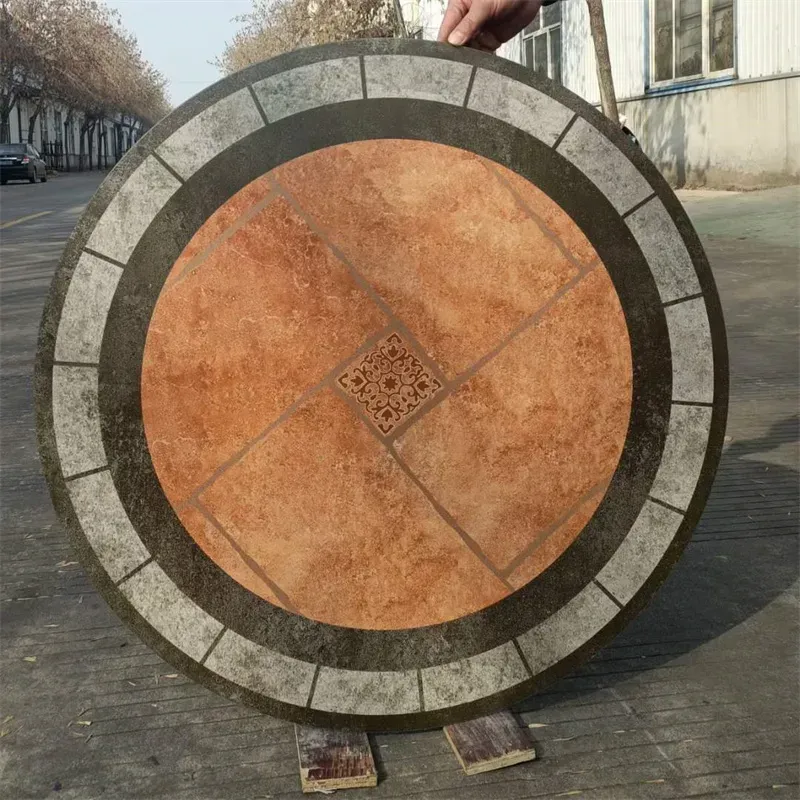ஜூன் . 04, 2025 18:40 Back to list
What is Tempered Glass and What It's Used For?
Tempered glass, also known as toughened glass, is a type of safety glass that has been heat-treated to increase its strength and durability. It is manufactured by heating standard float glass to extremely high temperatures—typically around 620°C—and then rapidly cooling it with high-pressure air jets. This process induces surface compression and inner tension, which gives tempered glass its unique mechanical properties.
From high-rise buildings and automotive applications to electronics and household fixtures, tempered glass has become a staple across industries where safety, strength, and reliability are non-negotiable. But what exactly makes tempered glass so valuable? And where is it most commonly used? Let’s break it down.
The Science Behind Tempered Glass
The tempering process is what distinguishes tempered glass from standard glass. By rapidly cooling the heated glass surface, manufacturers create a strong compression layer on the exterior and a balanced tension inside. This structure makes மென்மையான கண்ணாடி approximately four to five times stronger than untreated glass of the same thickness.
More importantly, when broken, tempered glass doesn’t shatter into sharp, dangerous shards. Instead, it breaks into small, pebble-like fragments that are far less likely to cause injury. This safety feature makes tempered glass the go-to material in environments where human safety is a top priority.
Key Benefits of Tempered Glass
1. Enhanced Safety
Tempered glass complies with major global safety standards, including ANSI Z97.1, EN 12150, and CCC. Its break-safe characteristics are ideal for architectural and automotive uses.
2. Heat Resistance
Tempered glass can withstand high thermal stress and temperature fluctuations without cracking. It's commonly used in environments where regular glass would fail, like oven doors or sun-exposed building facades.
3. Increased Strength
Compared to regular annealed glass, tempered glass is significantly stronger in both tensile and impact strength. It is often used in load-bearing applications or areas exposed to frequent handling.
4. Scratch Resistance
Although not scratch-proof, tempered glass has a harder surface than standard glass, making it more resistant to abrasion and minor surface damage.
Common Applications of Tempered Glass
1. Architecture’s Safety Backbone
Skyscraper Skins: Curtain walls & spandrels resisting 150mph winds
Death-Defying Floors: 19mm thick treads in Apple Store staircases
Panic-Proof Barriers: Mall balustrades containing 400 lbs of impact force
Why it wins: Meets IBC/ANSI Z97.1 drop-test standards – regular glass fails catastrophically.
2. Automotive’s Silent Guardian
Windshields (laminated + tempered): Stopping rocks at 70mph
Sunroofs: Containing rollover collisions
EV Battery Covers: Containing thermal runaway fires
Real data: Tesla’s Cybertruck uses 3-layer tempered armor glass.
3. Tech & Retail’s Unbreakable Canvas
Smartphone Back Panels: Surviving 6ft drops onto concrete
Self-Service Kiosks: Withstanding shopping cart hits
Museum Display Cases: Stopping hammer-swing vandals (true story)
4. Industrial’s Overlooked MVP
Factory Sight Glasses: Containing 300°C steam explosions
Lab Equipment: Resisting acid splashes & Bunsen burners
Solar Panel Backsheets: Outlasting 25-year UV bombardment
Limitations and Considerations
While tempered glass offers impressive benefits, it also comes with limitations. Once the glass has been tempered, it cannot be cut, drilled, or reshaped. Any custom fabrication must be done prior to the tempering process. Additionally, although it's stronger than standard glass, it is not indestructible and can still break under extreme force or edge impact.
For applications that require even higher safety performance or noise insulation, laminated tempered glass(https://www.chinamirrorglass.com/news/tempered-laminated-glass-10589.html)—made by bonding two sheets of tempered glass with an interlayer—might be the preferred solution.
Why Choose a Reputable Tempered Glass Supplier
Not all tempered glass is created equal. Inferior materials or poorly controlled tempering processes can lead to higher self-explosion rates, optical distortion, and product failures in the field. This is why sourcing from a certified, experienced supplier is crucial.
At Shottglass , for example, tempered glass products are manufactured using high-quality float glass and state-of-the-art tempering equipment. Every batch undergoes rigorous quality checks to ensure uniformity in strength, safety, and visual clarity. Whether you need flat tempered glass for partitions or curved tempered glass for architectural facades, choosing a trusted supplier guarantees better performance, lower maintenance costs, and long-term reliability.
, for example, tempered glass products are manufactured using high-quality float glass and state-of-the-art tempering equipment. Every batch undergoes rigorous quality checks to ensure uniformity in strength, safety, and visual clarity. Whether you need flat tempered glass for partitions or curved tempered glass for architectural facades, choosing a trusted supplier guarantees better performance, lower maintenance costs, and long-term reliability.
Tempered glass is more than just a safety upgrade—it's a high-performance material that meets the evolving demands of modern construction, design, and technology. With its unique combination of strength, thermal resistance, and break-safe properties, it’s easy to understand why tempered glass has become a standard material across industries worldwide.
Whether you’re a contractor sourcing large volumes for a high-rise project, a designer creating custom interiors, or a brand looking to enhance your product line with premium materials, tempered glass is a smart and dependable choice.
When quality, consistency, and safety matter, partnering with an expert tempered glass manufacturer is not just advisable—it’s essential.
-
What Is Float Glass- All You Need to Know
செய்திJun.04,2025
-
How Is Tempered Glass Made?
செய்திJun.04,2025
-
Different Types of Tempered Glass: Choosing the Right Solution for Your Application
செய்திJun.04,2025
-
What is the Difference Between Float Glass and Normal Glass?
செய்திMay.30,2025
-
Differences Between Float Glass, Tempered Glass and Laminated Glass
செய்திMay.29,2025
தொடர்புடையது PRODUCTS














